Massager Technology: A B2B Sourcing Guide to Core Features
- By Grace
- Updated on
Ever feel like you need a translator for massager spec sheets? You’re not alone. The page is a minefield of buzzwords: "Percussive," "vibration," "shiatsu"—what do they actually mean for your product's performance, and more importantly, your bottom line?
Getting this wrong is a huge risk. Industry data shows that nearly a third of new wellness products fail because their core massager technology simply doesn't meet the real needs of their target market.
As the CEO of KLCOSY, I’ve had countless conversations with sourcing partners who are just plain tired of the gimmicks. They need to know which technologies are reliable, effective, and actually worth the investment. That’s why we’ve built our entire philosophy around four proven technologies that deliver real, therapeutic benefits.
This guide is here to cut through the noise. We’ll break down the science behind the four key technologies you should look for in your B2B massager sourcing process. We'll cover how each one works, who it’s for, and how you can combine them to create a product that stands out for all the right reasons.
What is Advanced Heat Therapy?
You’ve seen "heat" listed as a feature on hundreds of products, but what does that really mean? Often, it’s just a weak, slow-warming element tacked on as an afterthought. We see it differently. For us, heat is a core therapeutic tool.
I remember a spa manager telling us our heat therapy massagers quickly became a client favorite for pre-manicure treatments. Why? The heat was consistent, rapid, and helped relax finger joints, genuinely improving the customer's experience. That’s the standard we aim for: heat that delivers a noticeable, reliable benefit every single time.
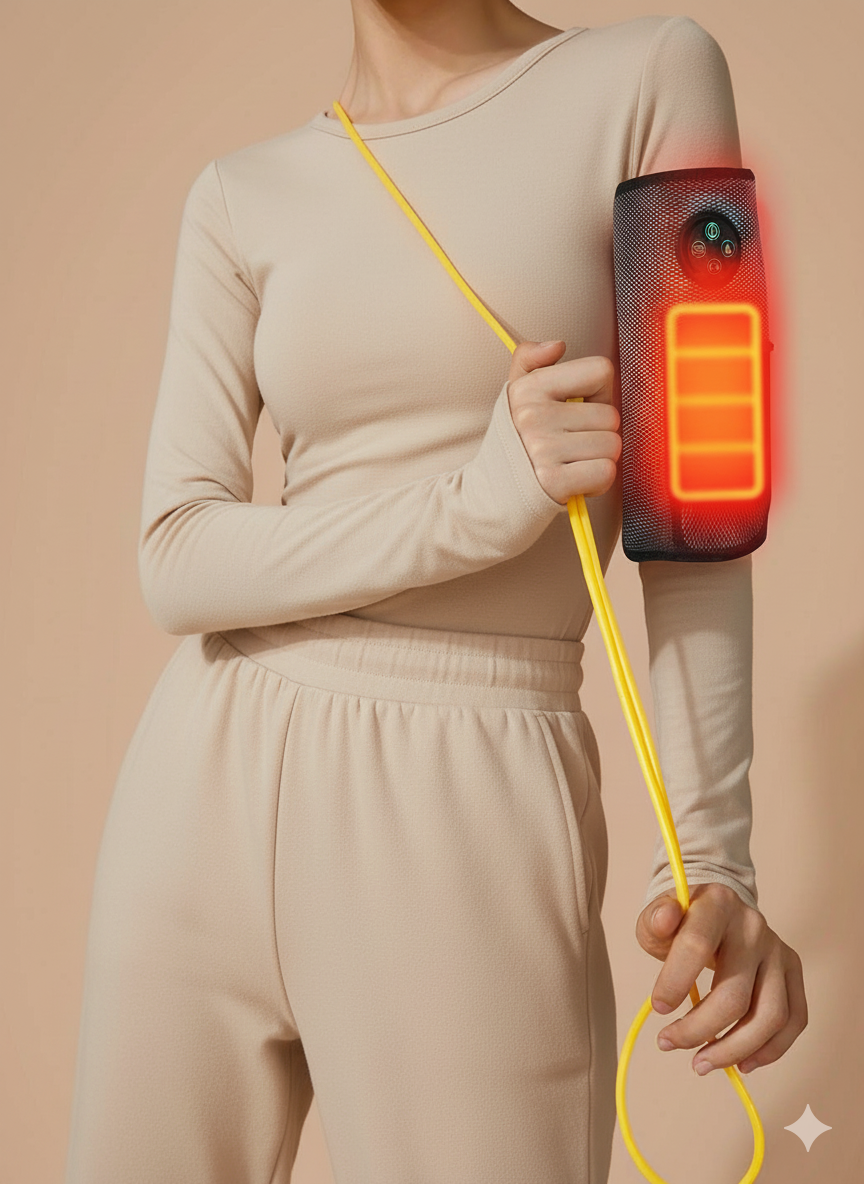
The magic is in the materials. We use graphene heating sheets, which blow traditional wiring out of the water. First, graphene gives you incredibly even heat distribution, so you can forget about annoying "hot spots." Second, it heats up almost instantly, delivering soothing warmth in seconds. We calibrate all our devices to a maximum of 45°C (113°F). This is the sweet spot—warm enough to penetrate deep into muscle tissue and boost blood flow, but safely below the threshold that could cause skin irritation. This obsession with safety and performance is critical for building trust, especially in markets where product liability is a real concern.
What is Targeted Vibration Therapy?
So, isn't all vibration the same? Not even close.
Vibration is another term that gets thrown around loosely. Many massagers on the market offer a generic, low-intensity buzz that does little more than numb the skin's surface. A true vibration therapy massager needs to be powerful and precise.
The goal here isn't just a pleasant feeling; it's to create oscillations that dig deep into muscle tissue, breaking up knots and stimulating circulation. A gym owner who stocks our products for his recovery zone told us athletes grab our massagers because the vibration feels "deep and effective," and actively helps them cut down on post-workout soreness.
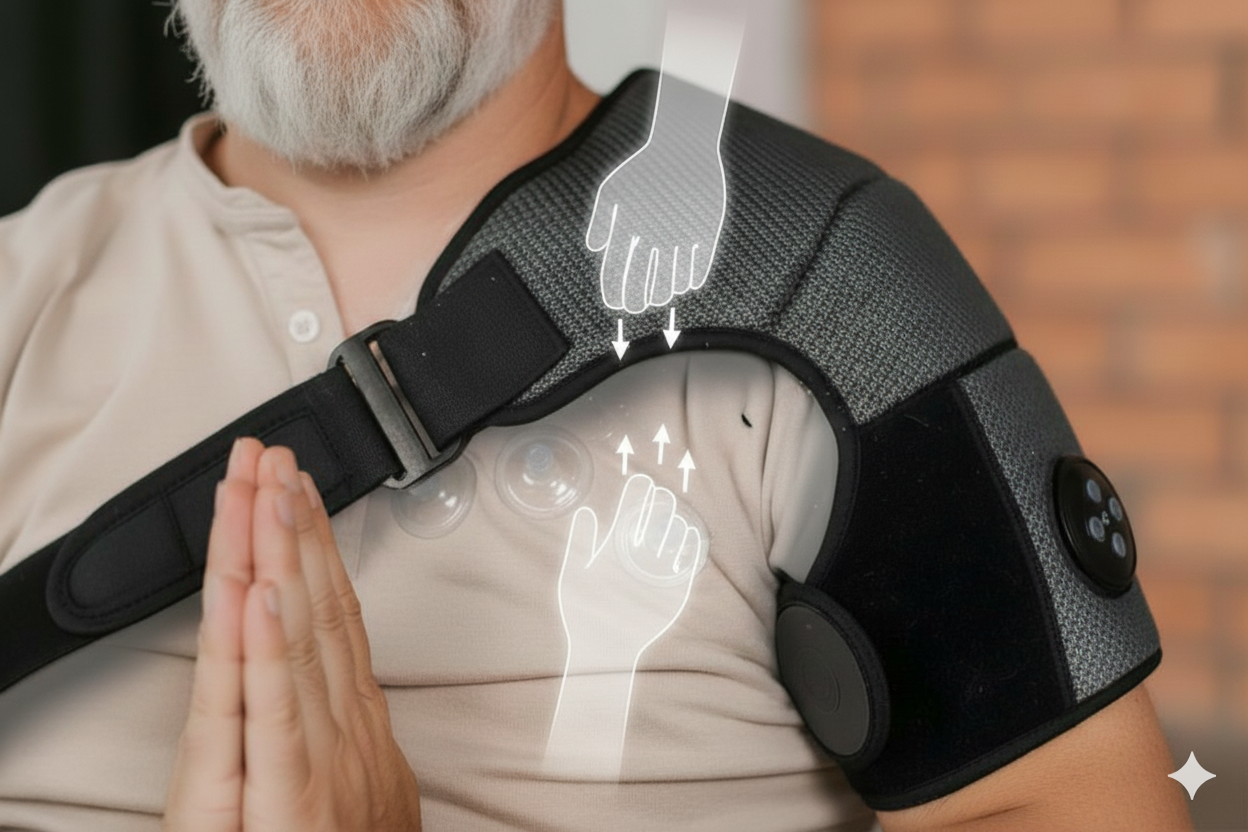
The difference is all about frequency. Our motors are engineered to operate within a therapeutic range of 20-400 Hz. This gives the user incredible versatility: lower frequencies for a gentle, soothing massage, and higher frequencies for a powerful, deep-tissue treatment. Bottom line: the motor is everything. We use high-torque, brushless motors that can sustain these frequencies without overheating or losing power—a common failure point in cheaper alternatives. That reliability is non-negotiable when you're building a premium product and a key factor when choosing a massager supplier.
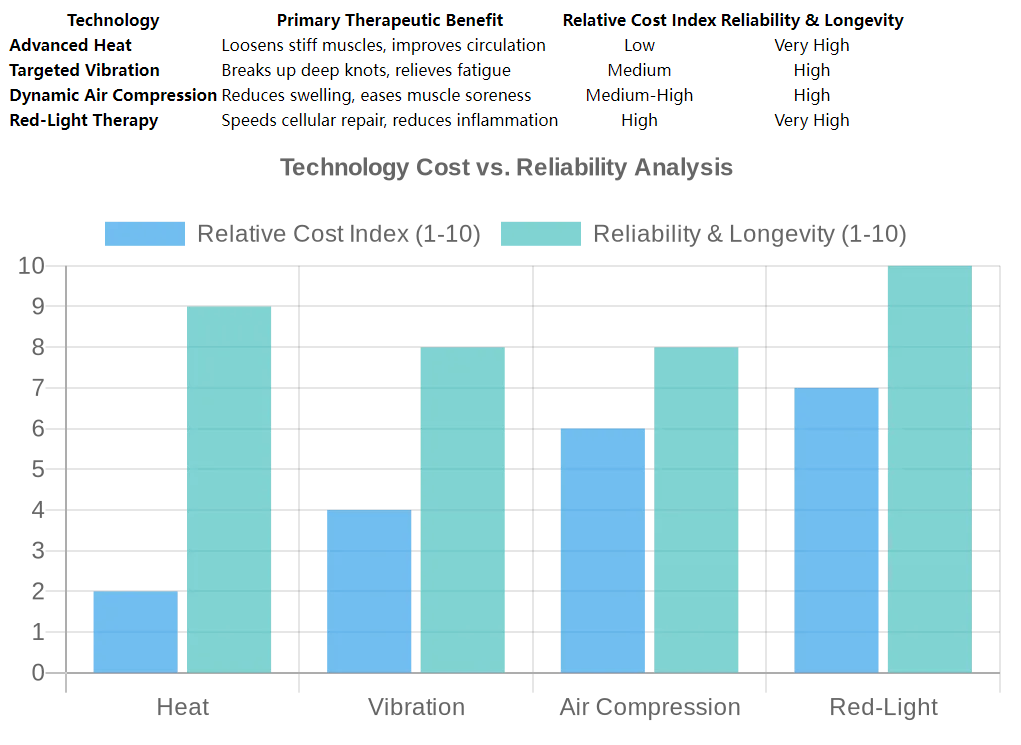
What is Dynamic Air Compression?
Think of it like this: while vibration is like a targeted drill breaking up knots, a dynamic air compression massager is like the rhythmic, wave-like squeezing of a professional massage therapist's hands. It provides a completely different kind of relief, making it essential for tackling swelling and fluid retention.
It's all about creating gentle, pulsating pressure that promotes lymphatic drainage and boosts circulation. One of our partners, a physical therapist, told us our leg massagers have become an indispensable tool for their patients with lymphedema. After just one session, the air compression visibly reduces swelling and discomfort.
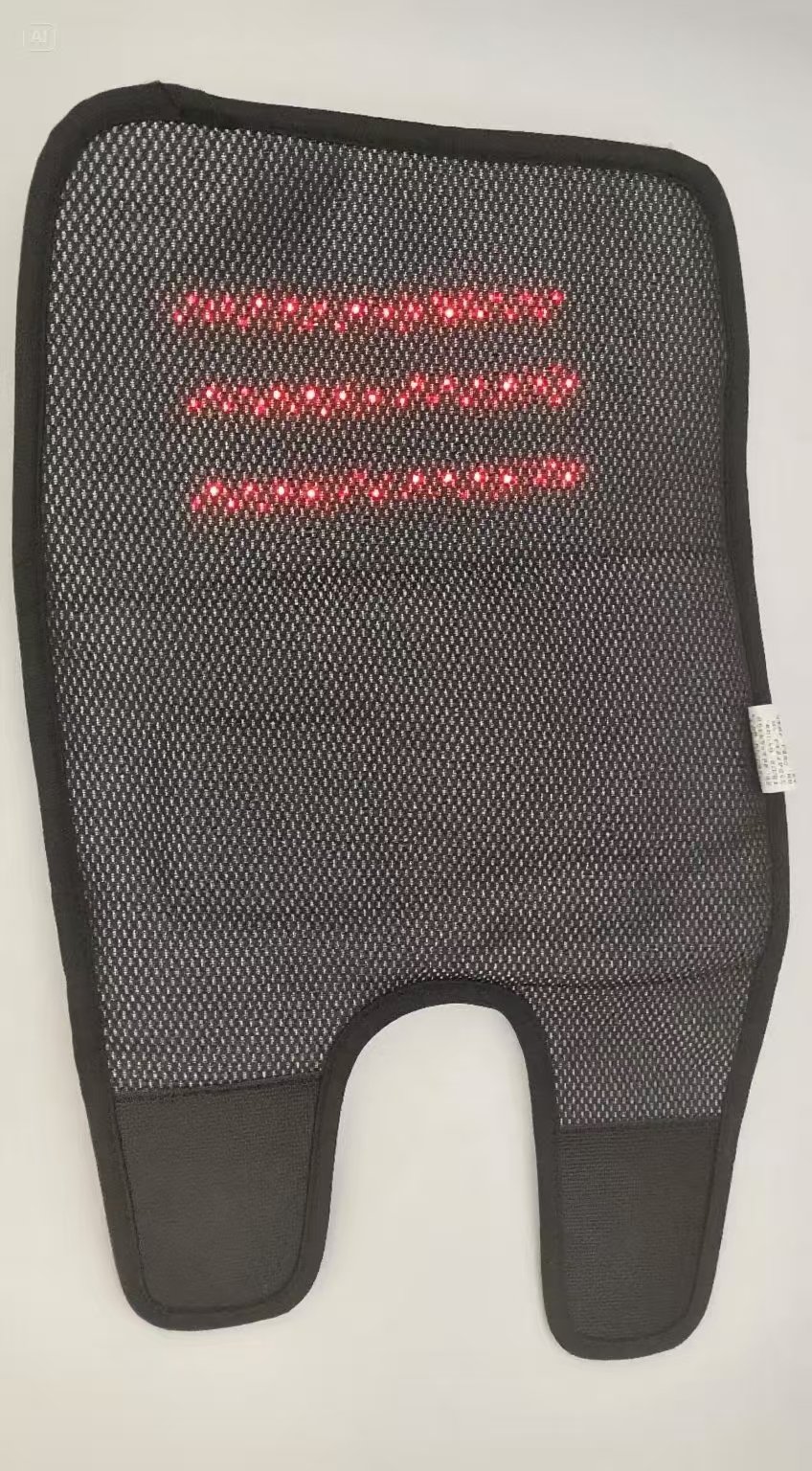
So how does it work? The device uses a smart network of precisely controlled air chambers. These multiple, independent airbags inflate and deflate in sequence, creating a "milking" action that gently pushes fluid away from the arms or legs. The real keys are the control module and the durability of the materials. We insist on high-quality, puncture-resistant fabrics and an intuitive electronic control panel that lets the user adjust the intensity and massage pattern. This level of customization is vital for therapeutic use and a critical part of massager product development.
What is Therapeutic Red-Light Therapy?
This is where we get into the serious, science-backed recovery tech. It's the most advanced technology in our lineup and a true game-changer in the wellness market. Unlike heat or vibration, a red-light therapy massager works silently at a cellular level to promote healing, without any sensation of heat at all.
It uses very specific wavelengths of light to penetrate deep into tissue. There, it stimulates the mitochondria—think of them as the tiny engines inside your cells—to ramp up energy production. A medical device distributor recently reported that our massagers featuring Red-Light Therapy are their top sellers for clinical use, simply because they help patients recover faster from soft tissue injuries.
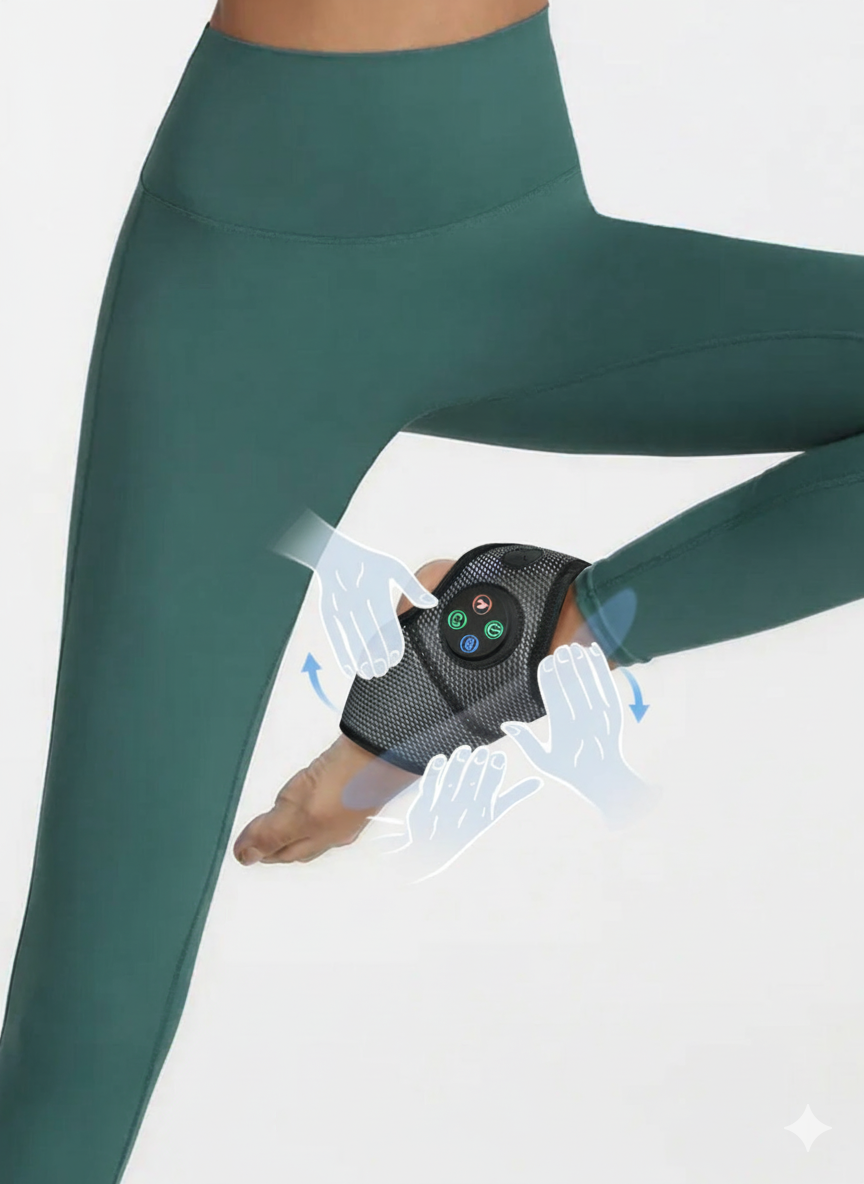
Now, the science has to be precise. We use high-efficiency LEDs that emit light in the 660-800 nanometer therapeutic window. This specific range is clinically shown to be the most effective for triggering a biological response called photobiomodulation. In plain English, it helps reduce inflammation, increase blood flow, and speed up the repair of damaged tissues. It’s a proven clinical technology that we’ve integrated into a portable, user-friendly form factor, and because it’s completely non-invasive, it's perfectly safe for use on sensitive joints.
Case Study: How a Partner Won the Pro Market
This technology is powerful on its own, but it's even better when combined. A partner wanted to launch a premium recovery device for pro athletes. Instead of a single-feature product, we co-developed an ODM massager that combined Vibration, Air Compression, and Red-Light Therapy.
The results speak for themselves:

By layering these technologies, they created a therapeutic massager with a massive performance advantage. This allowed them to command a higher price, drastically cut their return rate, and build a fiercely loyal customer base.
The bottom line is simple: the technology inside your product defines its value. By focusing on proven, therapeutic technologies like advanced heat, targeted vibration, dynamic air compression, and red-light therapy, you can build a product that delivers real results. The true innovation isn't just picking one—it's in how you combine them.
If you're ready to develop a massager built on a foundation of science, not buzzwords, let's talk. Contact our team to discuss which technology stack is the right fit for your brand and your market.




